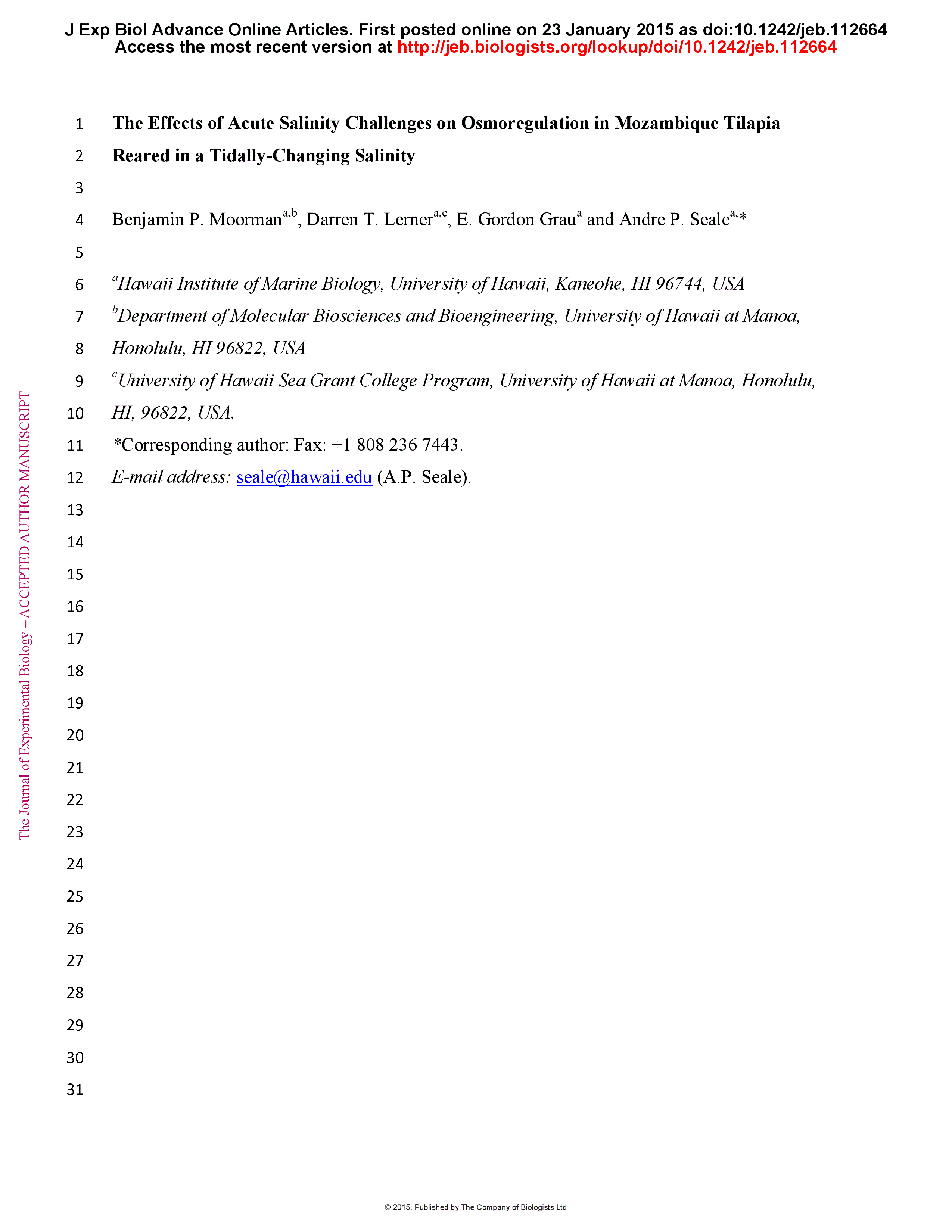Abstract
This study characterizes the differences in osmoregulatory capacity among Mozambique tilapia, Oreochromis mossambicus, reared in fresh water (FW), seawater (SW), or under tidally-driven changes in salinity. This was addressed through the use of an abrupt exposure to a change in salinity. We measured changes in: 1) plasma osmolality and prolactin (PRL) levels; 2) pituitary expression of prolactin (PRL) and its receptors, PRLR1 and PRLR2; 3) branchial expression of PRLR1, PRLR2, Na+/Cl- cotransporter (NCC), Na+/K+/2Cl- cotransporter (NKCC), α1a and α1b isoforms of Na+/K+-ATPase (NKA), cystic fibrosis transmembrane conductance regulator (CFTR), aquaporin 3 (AQP3) and Na+/H+ exchanger 3 (NHE3). Mozambique tilapia reared in a tidal environment successfully adapted to SW while fish reared in FW did not survive a transfer to SW beyond the six hour sampling. With the exception of CFTR, the change in the expression of ion pumps, transporters, and channels was more gradual in fish transferred from tidally-changing salinities to SW than in fish transferred from FW to SW. Upon transfer to SW, the increase in CFTR expression was more robust in tidal fish than in FW fish. Tidal and SW fish successfully adapted when transferred to FW. These results suggest that Mozambique tilapia reared in a tidally-changing salinity, a condition that more closely represents their natural history, gain an adaptive advantage compared with fish reared in FW when facing a hyperosmotic challenge.








